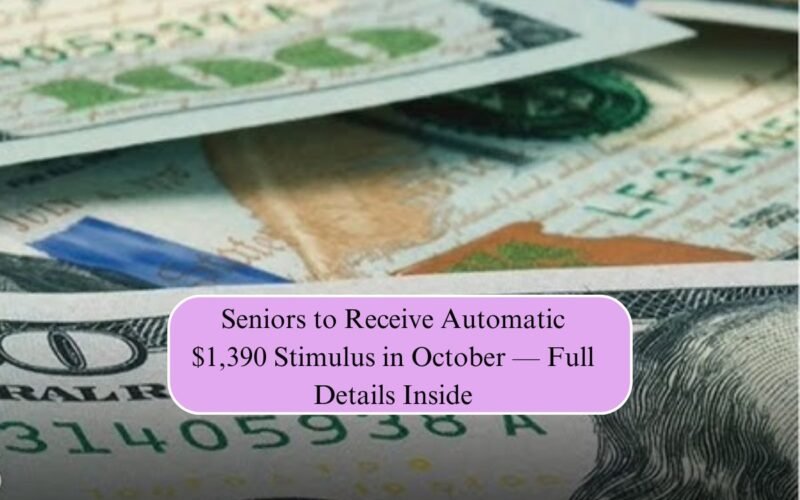Good news for millions of seniors across the United States — a new round of $1,390 automatic stimulus payments is set to hit bank accounts this October. The payment is designed to support retirees, Social Security recipients, and low-income seniors as part of an ongoing federal relief effort to ease the burden of rising living costs. With inflation continuing to impact essential expenses such as food, rent, and healthcare, this automatic deposit aims to provide much-needed financial stability to older Americans.
Why Seniors Are Getting a $1,390 Stimulus
The Social Security Administration (SSA) and Internal Revenue Service (IRS) have confirmed that this $1,390 stimulus is being issued to seniors who meet specific eligibility criteria under the Supplemental Support Initiative. This program includes one-time relief payments for retirees and Social Security recipients who may have missed previous stimulus rounds or who qualify for additional cost-of-living assistance in 2025. The payment is automatic, meaning recipients do not need to apply or take any extra steps to receive the funds.
Who Qualifies for the $1,390 Payment
The $1,390 stimulus payment is targeted toward Americans aged 65 and older who are already receiving Social Security or Supplemental Security Income (SSI). Eligibility may also extend to:
- Seniors who receive Social Security Disability Insurance (SSDI)
- Retirees with annual incomes below federal thresholds
- Seniors who did not receive full payments from previous relief rounds
- Low-income individuals or couples enrolled in government benefit programs such as Medicaid or SNAP
The government will use existing SSA and IRS records to identify qualified recipients automatically.
When Payments Will Arrive
The $1,390 stimulus payments will begin rolling out in October and continue throughout the month according to the SSA’s standard payment schedule. Payments will be distributed based on the recipient’s date of birth:
- Those born between the 1st and 10th will receive payments during the second week of October.
- Those born between the 11th and 20th will receive payments in the third week.
- Those born after the 20th will receive payments in the final week of the month.
Recipients who have direct deposit set up with the SSA or IRS will receive their payment faster than those receiving paper checks.
How to Check Your Payment Status
Eligible seniors can check their payment status by logging into their my Social Security account or reviewing their latest SSA benefit statement. Most payments will be automatically deposited into the same bank account where recipients receive their monthly Social Security benefits. Seniors are encouraged to ensure their banking and contact information are current to prevent any delays.
Why This Stimulus Matters for Seniors
This $1,390 payment provides meaningful support to millions of retirees struggling with ongoing inflation. With food prices, prescription costs, and rent increasing nationwide, the additional stimulus will help cover essential expenses for seniors on fixed incomes. It also reinforces the government’s commitment to protecting vulnerable populations from economic hardship. Financial experts advise seniors to track deposits closely and use this one-time relief to strengthen their financial security or pay off necessary bills.
FAQs
1. Who is eligible for the $1,390 stimulus payment?
Seniors aged 65 and older receiving Social Security, SSI, or SSDI benefits automatically qualify. Low-income retirees and those who missed earlier payments may also be eligible.
2. Do I need to apply to get the payment?
No. The $1,390 stimulus is automatic. Eligible seniors will receive it through the same method they currently receive their Social Security or SSI payments.
3. When will the $1,390 payments arrive?
Payments will begin in October and follow the SSA’s standard deposit schedule based on recipients’ birth dates.
4. How will I receive the money?
Most recipients will get the payment via direct deposit. Those without direct deposit will receive a paper check in the mail.
5. Is this payment part of a new stimulus program?
Yes, this payment is part of a targeted federal relief initiative focused on seniors and fixed-income Americans affected by inflation.

